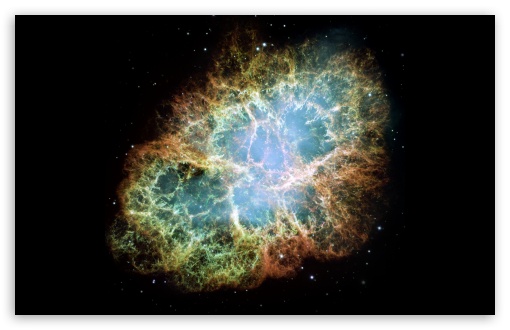We know the universe is full of dust. We see planets, proto-planets, rings and shells of gas and grains surround dying stars with beautiful arrays like the Crab Nebula above. It’s a thin fare. But astronomers believe there is plenty of it between stars in the Milky Way. The details of how it got from small collections of molecules to something big enough to be barely visible to the naked eye is a bit of a mystery:
Geek — What they found is that dust formation starts soon after a supernova begins. The initial eruption sends a superheated cloud of gases into space, where they form a shell around the star. When the real fireworks begin, the supernova explosion smacks into the wall of gas and compresses it. is As the gas cools to about 2,000 degrees Celsius, it begins to form solid particles as large as one micrometer across.
Without the dust there would be no Earth and no people. But it puts a constraint on interstellar travel. With trillions and trillions of dust particles a millionth of a meter across there will be rapid accretion, driven by simple static electricity. Let’s say a monster object results, a full milligram in mass. Larger than its many neighbors, but comparable in weight to a single snowflake.
A handy physics calculator gives the momentum energy equivalent using the good ole kinetic energy equation (Mo=mv2/2). If we had a vehicle that could achieve the unheard of velocity of one percent the speed of light, a whopping 3000 kilometers per second or about 6.7 million miles per hour, that calculator says a one-,milligram snowflake strikes with the energy of roughly one kilogram (2.2 lbs.) of high explosive.
A single milligram explodes on the hull of our hypothetical interstellar probe with the force of a kilo or more of TNT. It’s an educated guess how many such objects exist in deep space, would our spaceship hit one every second, every hour, every day? It seems like it wouldn’t take long to hit something like that if you’re going thousands of kilometers a second. A kilo of TNT makes quite a boom, make the object the size of a garden pea and it would be many, many times worse. There would probably be millions and maybe billions of booms on that order of magnitude en route to the nearest star.


And that is why I don’t even try to keep my place clean – the universe is against me.
So we ARE made of dust after all! Just not in the way the fundies think.
I just finished Alastair Reynolds’s Galactic North, a set of stories from the “Revelation Space” universe in which sublight spacecraft cruise around with the shape of needles and coated with thick layers of ice to shield the hull from ablation by cosmic dust.
He didn’t mention that such a vehicle in progress would look like a sparkler from the outside, though. How far away would such pyrotechnics be visible, and would their spectroscopy reveal the velocities involved?
Not seeing the mystery, myself. Even vaporized dust is going to re-condense. Not all dust comes from such explosive powerhouses as some class of Type II supernovae. Maybe it’s just how the Geek article is written. I think the “mystery” maybe pertains to a small-domain question over very specific things. It certainly isn’t any mystery as to how there is cosmic dust all over. Especially far away from supernovae, whether they are the source of the majority of the dust or reheating a mass of existing dust.
So what does this mean for the long-term prospects of Pioneer 10?
Stephen, ever since I saw Star Wars and Star Trek, I have always dreamed of interstellar hyper light travel. How dare you crush my dreams with this “A single milligram explodes on the hull of our hypothetical interstellar probe with the force of a kilo or more of TNT”?!
On a more serious note, we should be able to test your dust theory by charting the deceleration of Voyagers 1 and 2.